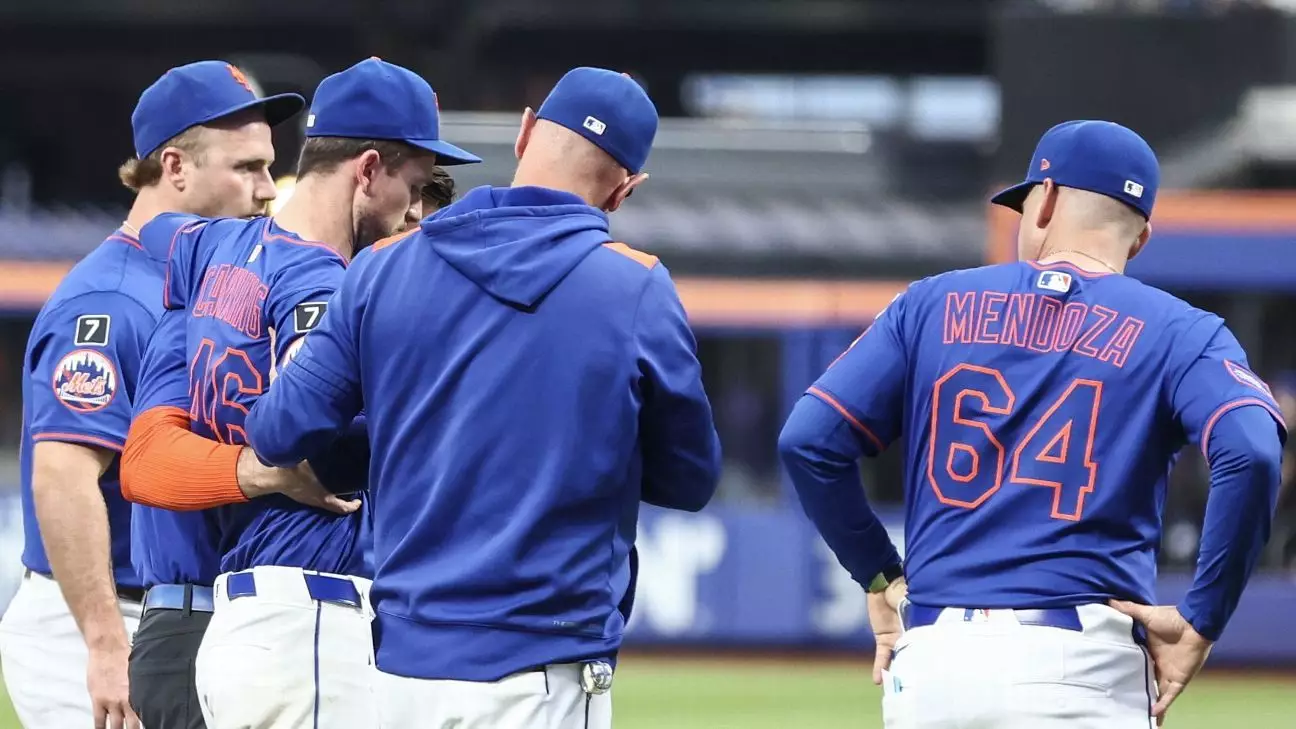The New York Mets’ pitching woes took another devastating turn when Griffin Canning suffered a likely Achilles injury during a recent game against the Atlanta Braves. This injury not only compounds an already fragile rotation but also raises serious questions about the team’s ability to maintain competitive consistency. Canning’s injury, which appeared non-contact yet severe enough to bring him to the ground immediately, highlights the fragility of an already strained bullpen that has been undermined by lingering durability problems.
A Pattern of Misfortune and Misstep
Canning’s injury is far from an isolated incident; rather, it accentuates a disturbing pattern. Over the last fortnight, the Mets have lost three key starters from their Opening Day rotation, creating a gaping void in pitching depth. Kodai Senga is sidelined with a hamstring strain, Tylor Megill is out due to an elbow sprain, and Sean Manaea’s anticipated comeback was derailed by a bone chip in his elbow. This sequence of injuries forces the Mets into a reactive posture, constantly tweaking personnel and hoping for reinforcements to return rather than proactively cultivating resilience in their pitching corps.
Who Carries the Load Now?
Griffin Canning’s performance this season was arguably one of the few bright spots—boasting a 7-3 record and a respectable 3.77 ERA, a significant improvement from his previous year with the Angels. His injury inevitably raises concerns over the Mets’ ability to shoulder the pitching burden. While Austin Warren admirably stepped in, his role as a reliever can only partially alleviate the pressure on the starting rotation. The return of Frankie Montas from a lat injury injects some hope, but the road to restoring depth remains steep. In the current scenario, the Mets’ pitching staff looks precarious, resembling a house of cards on the verge of collapse with each subsequent injury.
Management’s Dilemma: Navigating Injury and Instability
From a management perspective, the Mets now face a uniquely challenging balancing act. The team’s baseball operations, led by manager Carlos Mendoza and president David Stearns, have expressed cautious optimism about potential returns but are in essence scrambling to patch a leaking ship. The lack of dependable starters forces the front office into frequent, last-minute roster changes and strategic improvisation. This instability risks not only the club’s short-term competitiveness but also the development and morale of pitchers thrust prematurely into major league roles.
The Overlooked Issue of Rotation Sustainability
Analyzing this injury crisis reveals broader systemic concerns about the Mets’ approach to pitcher health and rotation sustainability. The cluster of ailments—ranging from hamstrings to elbows to Achilles tendons—may signal deeper issues related to conditioning, workload distribution, or even the pressures placed on pitchers in today’s grueling MLB calendar. Instead of seeing these injuries as mere bad luck, the Mets would benefit from a more critical internal review of training regimens and injury prevention strategies. Without structural change, the team is vulnerable to repeated setbacks with little room for recovery.
Changing the Narrative: Rethinking Depth and Resilience
Rather than resigning themselves to the injury curse, the Mets could seize this moment as an opportunity to rethink how they build pitching depth. Relying predominantly on a handful of starters in peak health is inherently risky; robust rotations require multiple tiers of readiness, including effective bullpen arms who can spot-start and reliable mid-rotation players who can absorb innings without significant drop-offs. Proactively growing this depth might mean embracing unconventional strategies, like investing more in player durability or diversifying pitching styles to reduce wear and tear.
Hope Amidst the Turmoil
Despite the grim outlook, there are slivers of hope. The Mets have seen promising flashes from certain players and, importantly, there is cautious anticipation about recoveries. Still, turning these hopeful signs into a consistently competitive pitching staff requires decisive action. It calls for a front office that prioritizes long-term health and competitive stability over short-term fixes. Griffin Canning’s injury is unfortunate, yes, but it could also be a catalyst that forces some overdue reckoning. For the Mets to avoid becoming a tragic tale of untapped potential and injury-riddled decline, it is imperative they think harder and act smarter about the foundation of their team: pitching.


Leave a Reply